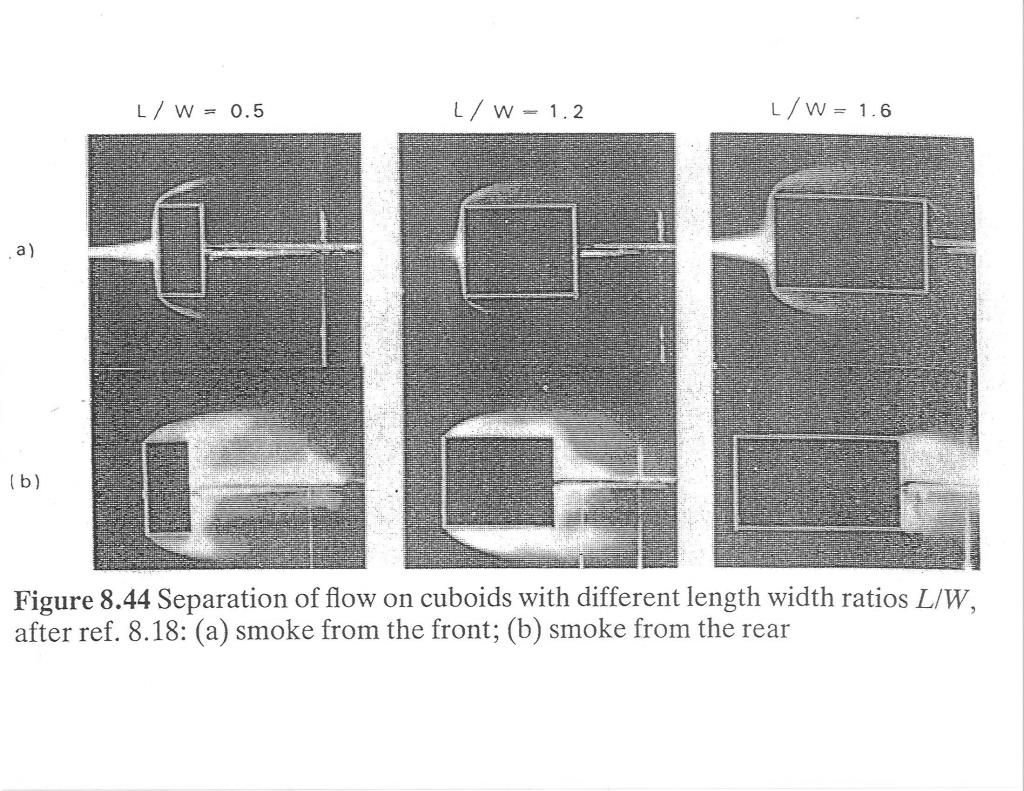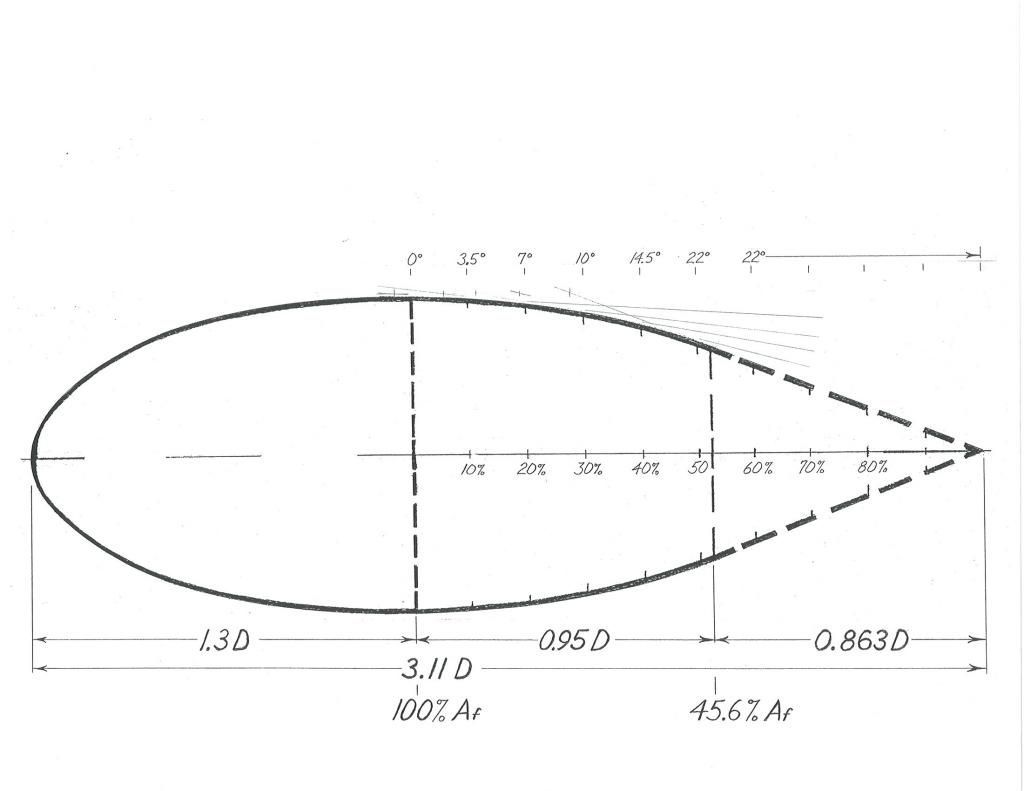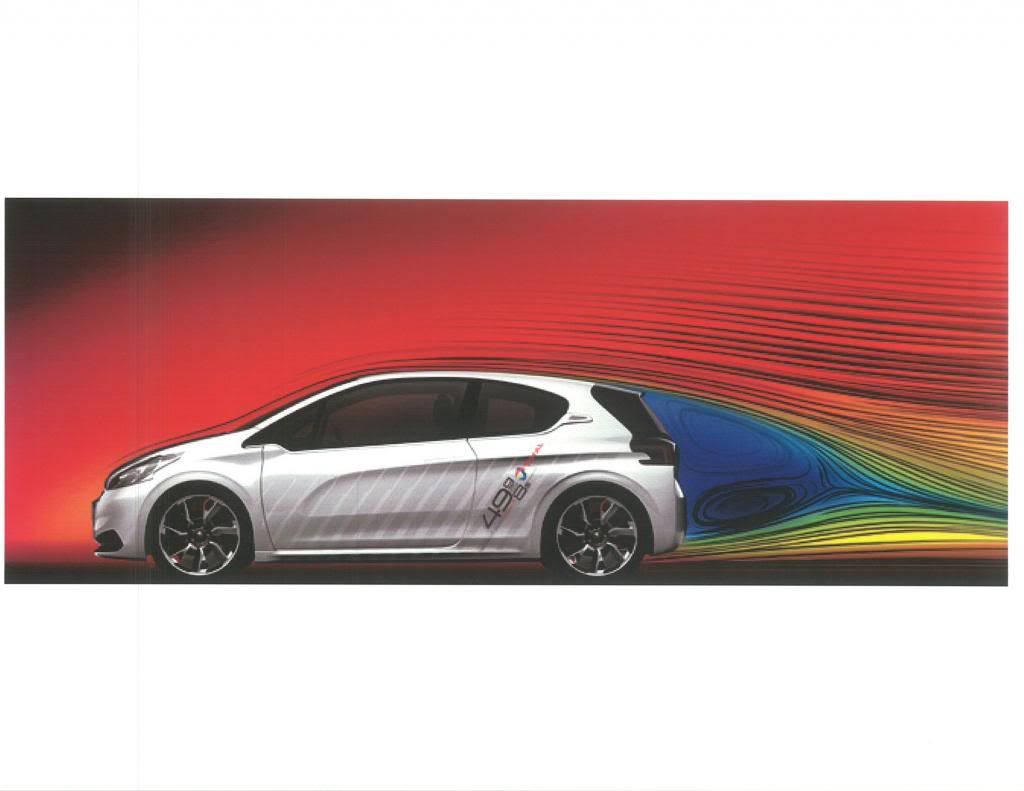Quote:
Originally Posted by Madact

Looking closely at the results from those makes me wonder if there'd be merit to a 'double box' arrangement: On the outer edge (or at a very small offset), have a very shallow box, either straight or angled in, with the conventional 'offset cavity' inside it (blue). The shallow outer box (or 'lip' I guess) might even allow a splitter (red) to be more effective, though my money would be on the inner box cavity.
Goes against the KISS principle of course  but I'm thinking if rounded edges is bad, sharp 90 degree edges is better, maybe sharper-than-90-degree edges may be better still? Unfortunately I'm not in possession of a large truck fitted with precision instrumentation to try it out 
 |
It's just my opinion,but I think all three would have a shot at drag reduction.
You've got this large turbulent wake

The major eddies might be burst and broken up by the double-box fins and splitter,creating a more homogeneous wake of smaller eddies.

Any vorticity captured at the 1st box would help pull the flow in.I don't know about the base pressure though.The entire base pressure is governed by the pressure at the point of separation,and we're not really altering this.
--------------------------------------------------------------------------
If you have access to a university lab,you could throw some money at the engineering department,and sponsor some undergrad or graduate study,either in CFD or a scale wind tunnel.They might already have a truck model,and then they'd only have to fab up the fins.
--------------------------------------------------------------------------
The 'system' would be light.Relatively inexpensive.It probably wouldn't freak out the truckers who'd have to deal with it on a day to day basis.
Depending upon the test results,someone could decide if it's a viable option to competing technologies.
It would need to collapse if struck from the rear,or insurance companies would be all over it.
We can never have TOO MUCH information to work with.

Here is Mair's boat tail recommendation as a comparison.You can see how he handles the TBL with kid gloves until the cambered flow and momentum is fully established.

Here is an abbreviation of Mair's research model,with the constant-velocity portion of the body removed.

Another comparison is the dimpled golf ball with TBL and delayed separation.If this gentle aft-body contour is 'scaled' up,the separation point can be moved rearward indefinitely as a function of radius.

Again,the TBL is allowed only a very gentle pressure gain.
The shape of the wake itself suggests a contour which the air would respect


You can see how the 1-liter VW takes advantage of the profile

I did find the Continuum Dynamics image (This is the 18-wheeler tested at NASA Ames Research Center in 1989) and the fins are placed very 'shallow' with respect to the trailer box.I don't have it scanned.And it's a very small image.